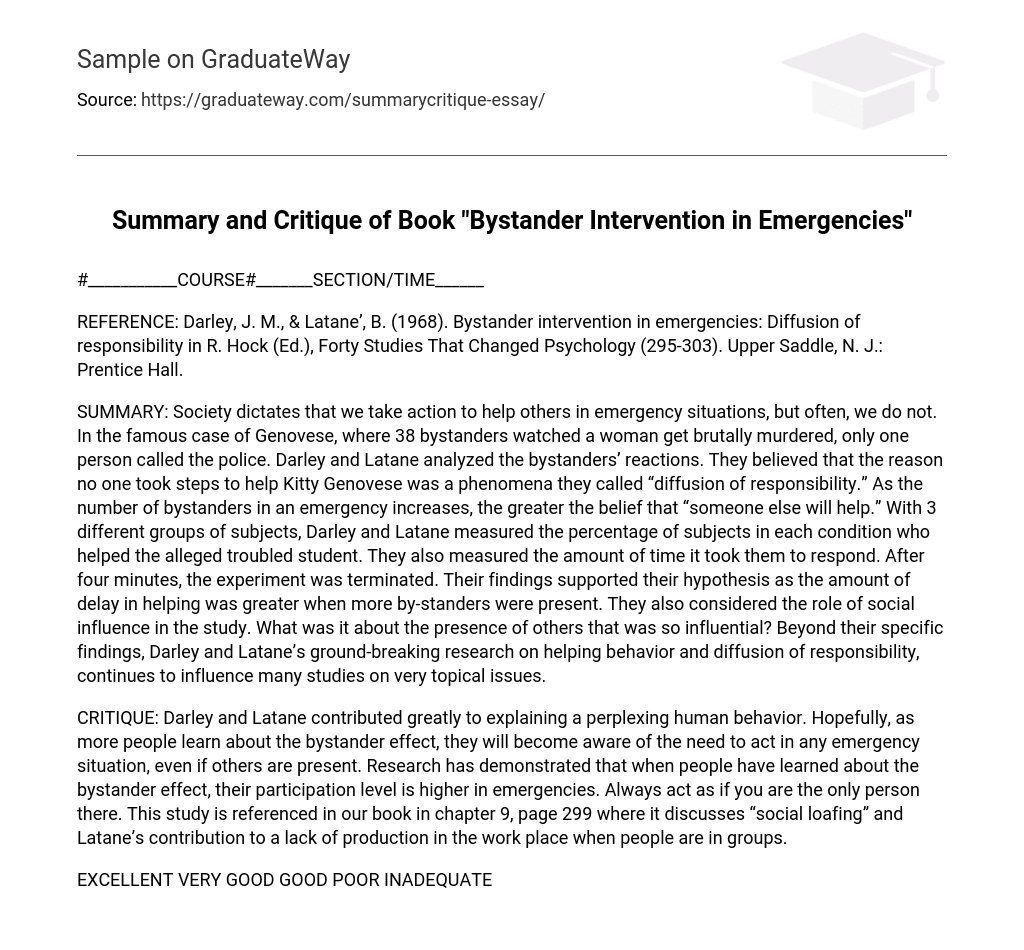Society requires us to assist others during emergency situations. However, often we fail to do so. In the well-known Genovese case, 38 bystanders witnessed a woman being brutally murdered, but only one person called the police. Darley and Latane analyzed the reactions of these bystanders and attributed the lack of action to a phenomenon they termed “diffusion of responsibility.” The more bystanders present in an emergency, the stronger the belief that “someone else will help.” Darley and Latane conducted an experiment with three different groups of subjects to measure the percentage of subjects in each condition who offered assistance to a troubled student. Additionally, they measured the response time of the subjects, terminating the experiment after four minutes. The results corroborated their hypothesis as the delay in offering help increased with greater numbers of bystanders.
Darley and Latane’s research on helping behavior and diffusion of responsibility has had a significant impact on numerous studies related to contemporary issues. They specifically focused on the influential aspect of the presence of others when examining social influence in their study, shedding light on perplexing human behavior. Increasing awareness of the bystander effect is ideal, as it encourages individuals to take action in any emergency situation, regardless of others’ presence. Research shows that educating people about the bystander effect increases their involvement during emergencies. Thus, it is crucial to always act as though you are the sole individual present. This study is referenced in chapter 9, page 299 of our book, where it discusses “social loafing” and Latane’s contribution to reduced productivity in group settings within the workplace.





